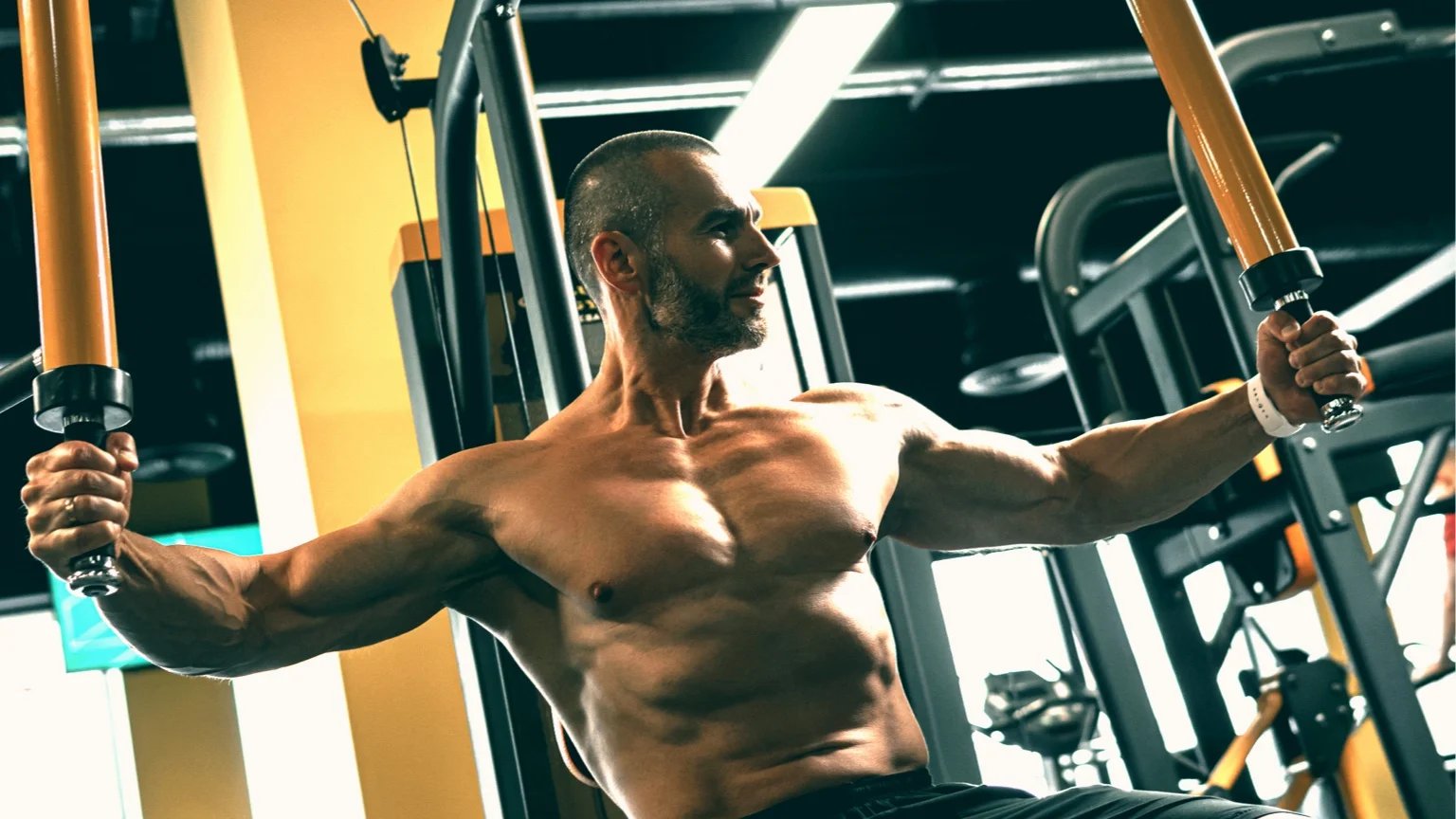
The chest fly is a popular, upper body exercise that isolates your chest muscles to help you build bigger and strong pecs. The movement starts with your arms extended out to your sides and sees you bring them together in front of your chest. You can perform this exercise with dumbbells, a pec deck machine or with a cable machine.
Jump to
Benefits of the chest fly
Isolation of your chest
When it comes to your chest, you're probably already doing one or more compound exercises in your workout routine. Bench press, push-ups and chest dips are all exercises that work your pecs, alongside other muscles including your triceps and shoulders.
It makes sense to focus your routine on compound exercises. These exercises engage multiple muscle groups at the same time. This makes your workouts more effective, both in terms of engaging more muscle and getting the most out of your time in the gym.
But, if you want to specifically work your pectorals, adding an isolation exercise to your routine can help promote targeted muscle growth and chest development. Chest flys and cable crossovers are both isolation exercises that work your pecs.
Lower injury risk
Exercises like the bench press and dumbbell press demand a significant amount of stability and control. This can make it difficult for beginners to execute with the proper form.
Particularly when lifting heavy weights, there is always a risk of injury if you perform an exercise improperly. In compound moves, you risk putting too much strain on muscle groups other than your chest.
The chest fly is a safer exercise, partly because it isolates your pecs. The wide sweeping motion of the dumbbells also makes the weights easier to manage and control.
Muscles worked - pectorals
The pectoral muscles, commonly known as “pecs”, are the muscles located in your chest area. They are made up of two parts:
- Pectoralis major – This is the larger of the two muscles, and is the most visible muscle in your chest. It is fan-shaped and stretches from your collarbone and sternum to the humerus in your upper arms. It’s responsible for movements like pushing and pressing.
- Pectoralis minor – This is the thin, flat muscle that’s located beneath your pectoralis major muscles. It stretches from your ribs to your scapula. It plays a key role in the movement and stabilization of your shoulder blades.

The pectoralis major has two “heads”.
- The clavicular head originates from the clavicle (collarbone) and connects to the humerus. As part of the pecs, this head helps move and medially rotate the arms, but can also independently flex the shoulder.
- The sternal head originates from the sternum, fanning out to also connect to the humerus. This head also acts to create movement and rotation of the arms.
All chest flys and cable crossovers target your pectoral muscles. You can put more emphasis on your upper pecs (the clavicular head) by using an incline variation. Similarly, decline variations will shift emphasis to your lower pecs (sternal head).
It's a good idea to include inline, flat and decline variations of chest exercises in your chest or push day workout, whether that's the chest fly or a compound exercise like the bench press. This will ensure comprehensive and balanced development of your chest muscles.
Flat bench dumbbell chest flys
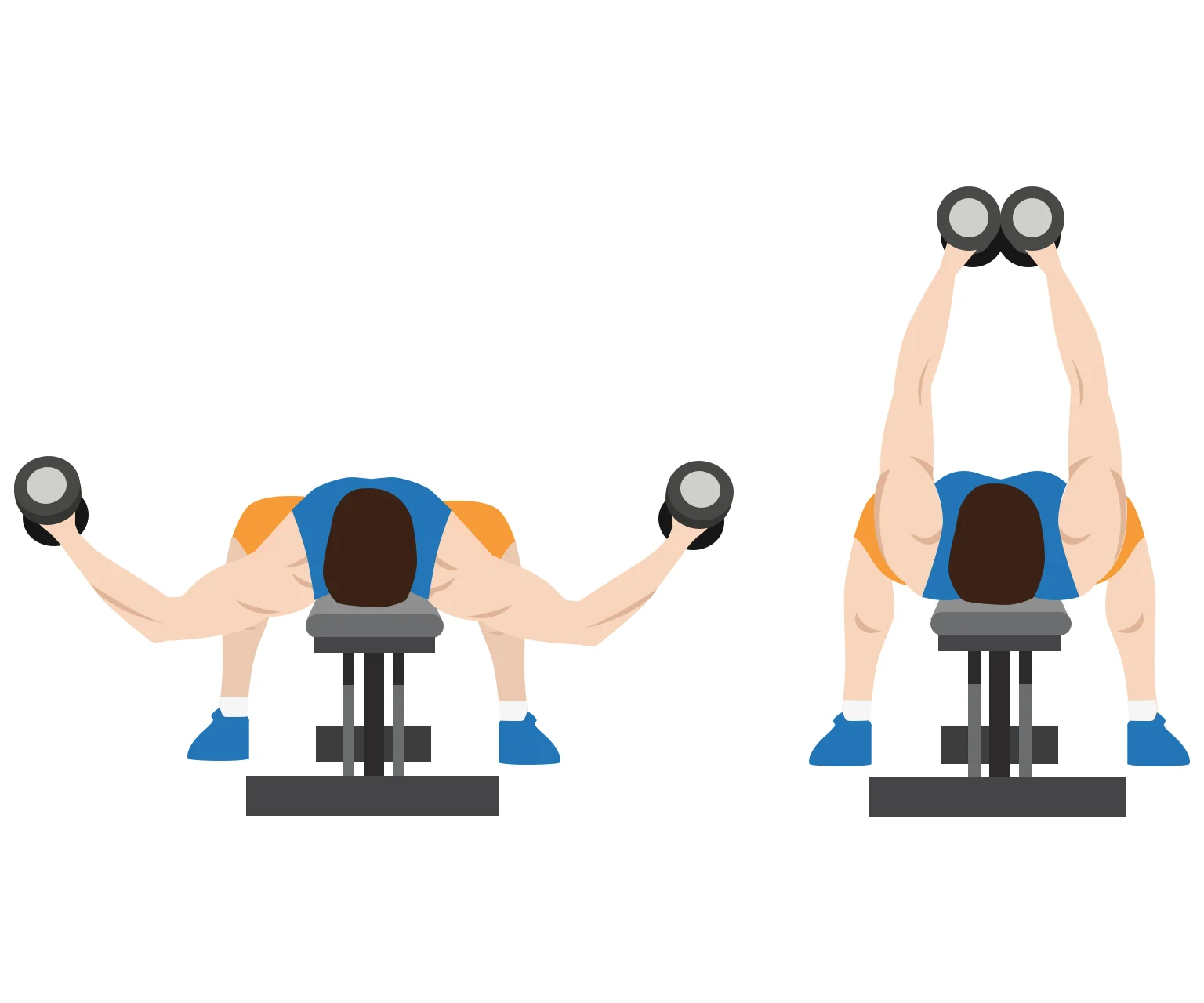
Chest flys primarily target and strengthen your pectoral muscles. This exercise also helps increase the size of your chest, which can improve your upper body aesthetic.
The chest fly is an excellent exercise to add to your chest and triceps workout or push day workout routine. Since it's an isolation exercise, you should perform it after compound exercises like bench press to fully exhaust your muscles and promote growth.
Lying flat on the bench gives your pecs an even workout, compared against incline or decline flys which emphasize your upper or lower pecs, respectively.
How to do
- Lie down on a flat bench. Hold a dumbbell in each hand, with your palms facing each other.
- Lift up the dumbbells directly above your chest.
- With a slight bend in your elbows, lower your arms out to both sides in a wide arcing motion. You should feel the stretch in your chest.
- Squeeze at the peak of the movement.
- Finally, raise your arms back up to the starting position.
- Repeat for the desired number of reps.
Sets and reps
In most workout routines, 3-4 sets of 8-12 reps is a good place to start. This range is ideal for hypertrophy (muscle growth).
The incline dumbbell fly targets chest muscles without heavy weight. Choose an appropriate weight for your fitness level. You will need less weight than a standard bench press.
As you become stronger, you can challenge yourself by gradually increasing the weight.
Incline dumbbell chest flys

While the flat bench fly emphasizes your middle and lower chest muscles, the incline chest fly specifically targets your upper pecs. This can help you achieve a more comprehensive and well-rounded development of your chest.
Many workout routines will incorporate an incline version of the chest fly or bench press.
How to do
- Set an incline bench to an angle of 30 to 45 degrees.
- Lie on the bench, holding a dumbbell in each hand with your palms facing each other.
- Hold the dumbbells directly above your chest. Your arms should be vertically upwards, rather than projecting out in front of your chest.
- With a slight bent in your elbows, lower your arms out to your sides in a wide arc. The dumbbells should be level with your chest.
- Now, engage your chest to bring the weights back up to the starting position.
- Repeat for the desired number of reps.
Decline dumbbell chest flys

The decline variation of the chest fly puts more emphasis on your lower pecs. The angle of the bench helps you isolate and target this area more effectively.
How to do
- Set your bench to a decline of about 30 degrees.
- Lie down on the bench, holding a dumbbell in each hand.
- Hold the dumbbells directly above your chest, with your palms facing each other.
- With a slight bend in your elbows, lower your arms out to your sides in a wide arcing motion. You should feel the stretch in your chest.
- Now, use your chest to bring the weights back up to the starting position.
- Repeat for the desired number of reps.
Floor dumbbell chest flys
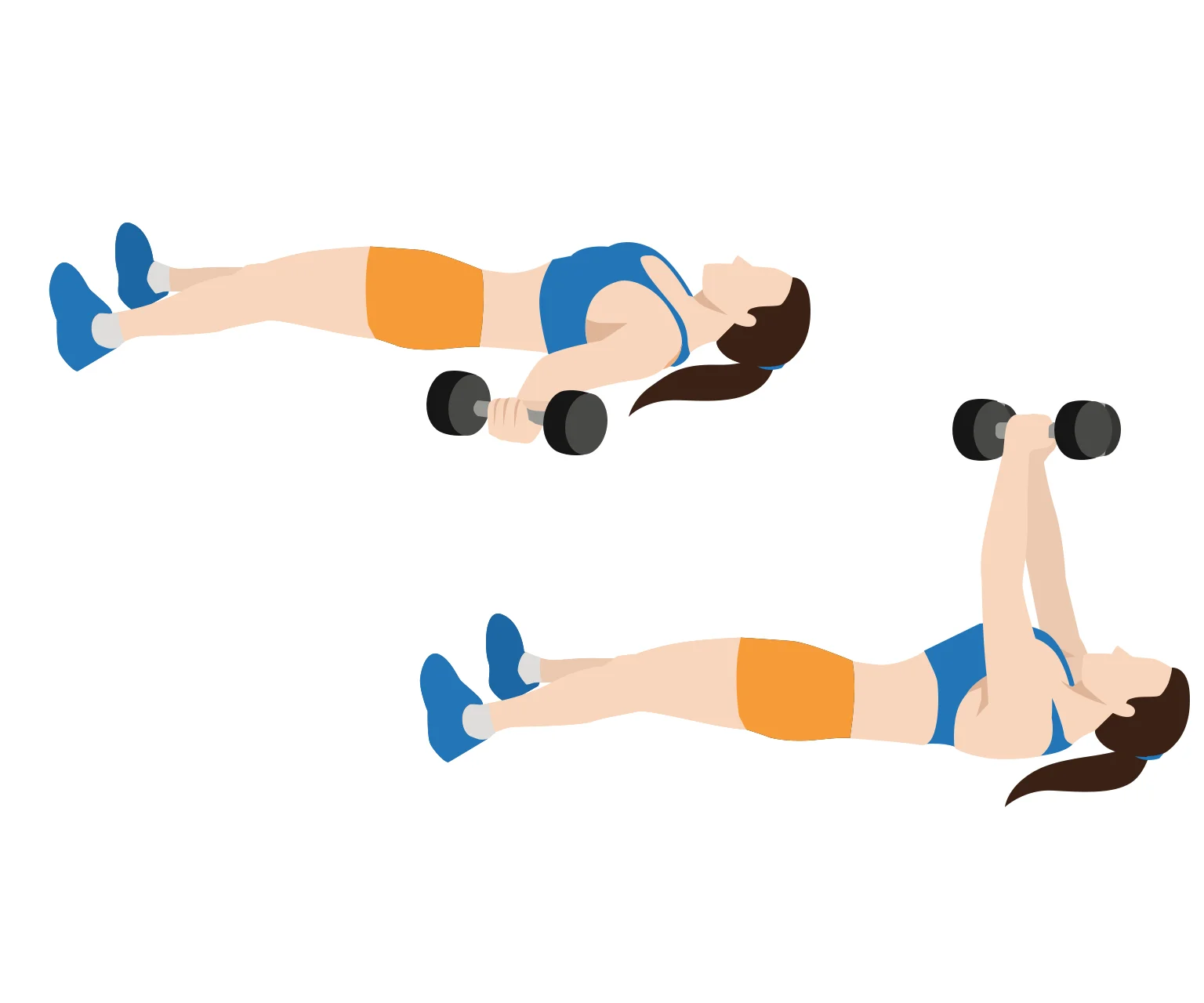
It's also possible to perform the chest fly by lying flat on the floor or an exercise mat. The main difference is that the floor limits your range of motion. This is because your elbows are stopped by the ground, limiting the stretch in your chest.
The limited range of motion makes it a decent exercise for a beginner, although you will benefit from using a bench to get the full range of motion.
How to do
- Lie flat on your back on the floor. Hold a dumbbell in each hand.
- Bring the dumbbells together above your chest.
- Slowly lower the dumbbells out to your sides in an arcing movement.
- Hold for a moment, then raise the dumbbells back to the starting position.
- Repeat for the desired number of reps.
Pec deck chest flys

Because they work with free weights, dumbbell chest flys require a degree of stabilization and control. Pec deck chest flys instead use a machine, in a seated position. The use of a machine allows for a controlled movement, which further isolates your chest muscles. It also helps you adopt the proper form while doing the exercise, which can reduce the risk of injury.
How to do
- Adjust the seat on the pec deck machine so your elbows are level with your shoulders.
- Sit down and grab the handles, keeping your back flat against the pad.
- Slowly bring the handles together until they are touching.
- Now, with a controlled motion, return the handles back to the starting position.
- Repeat for the desired number of reps.
Cable crossovers
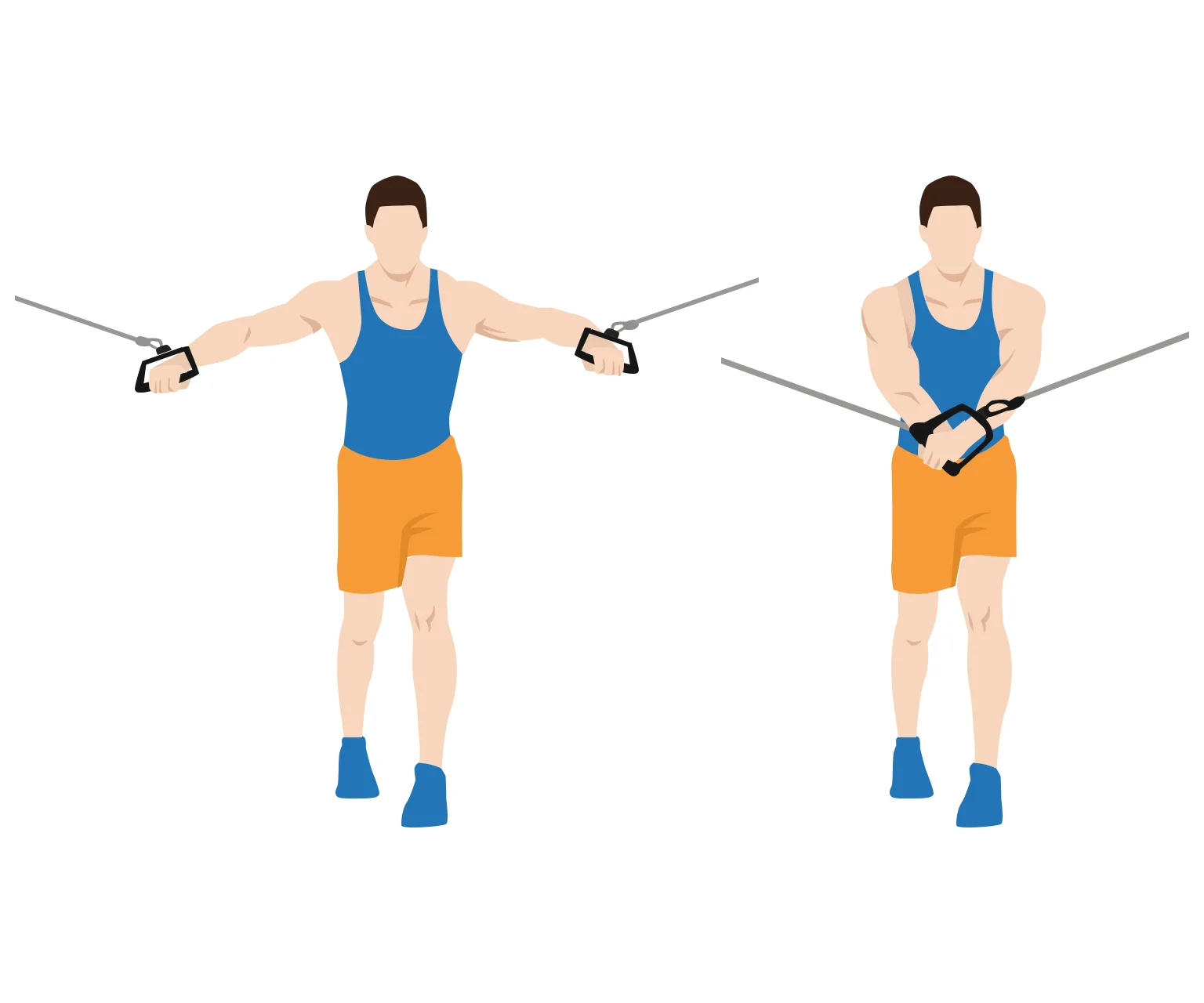
The cable crossover is a variant that uses a cable machine. Cables provide a constant tension through the entire range of motion, which can make the exercise easier to perform than free weight chest flys. The use of a cable potentially allows you to work with more resistance, too, making it a good exercise for intermediate and advanced trainees to progress.
How to do
- Adjust the pulleys to the high position.
- Stand in the middle of the cable machine. Grab the handles with each hand and take a step forward so there's some tension in the cables.
- Lean forward slightly, but keep your spine neutral.
- With a slight bend in your elbows, pull your hands down and across your body. You should feel the squeeze in your chest muscles.
- Finally, slowly return your arms back to the starting position. Keep tension in the cables at all times.
- Repeat for the desired number of reps.
Upward cable crossovers
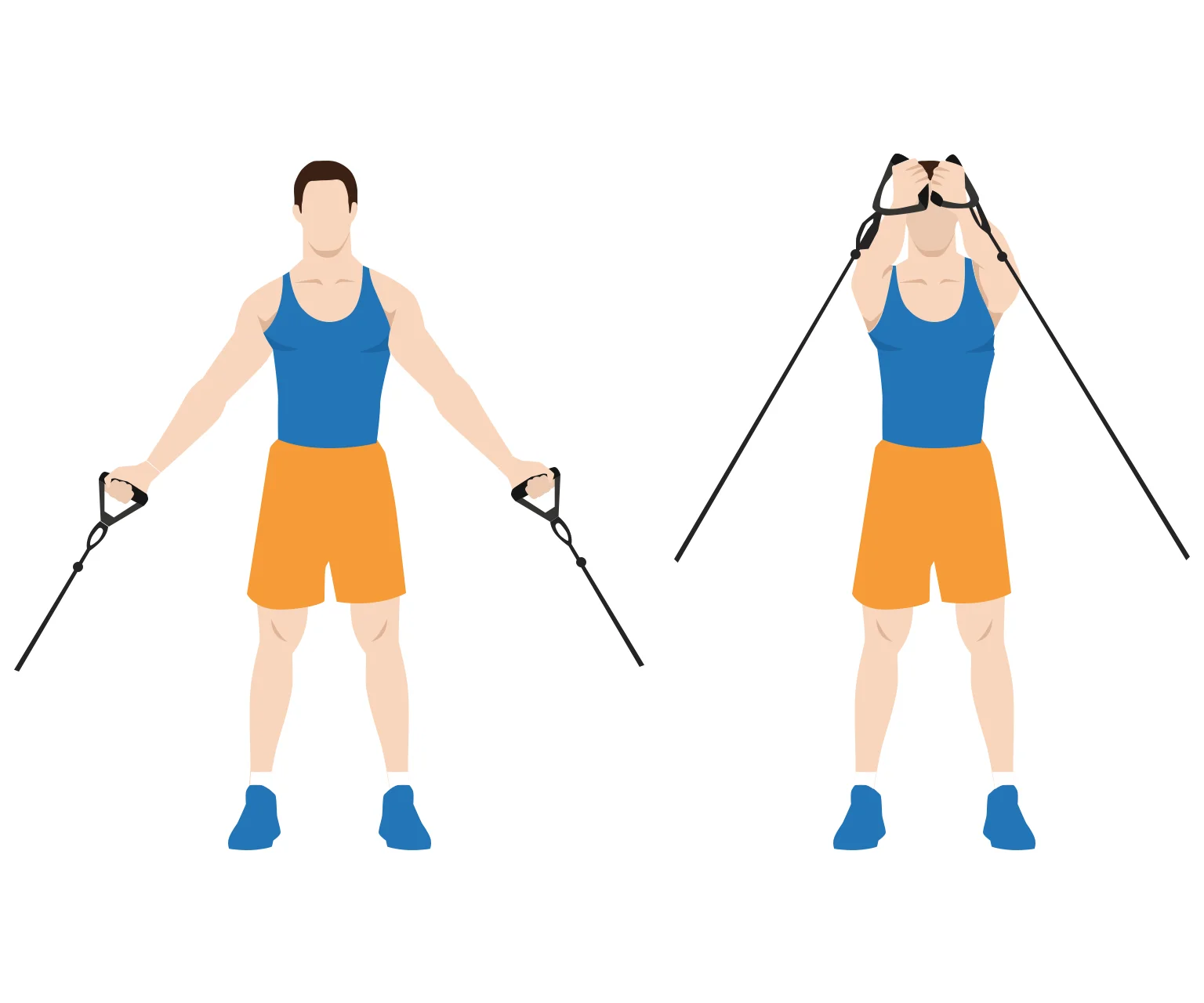
You can also do cable crossovers in to the opposite direction. The upward cable crossover sees you pull the cables up and across your body, rather than down and across. This change in movement places more emphasis on your lower pecs.
How to do
- Adjust the pulleys to the lowest position.
- Stand in the middle of the cable machine. Grab the handles with each hand and take a step forward so there's some tension in the cables.
- Keep your back straight and shoulders rolled back.
- With a slight bend in your elbows, pull your hands up and across your body. You should feel the squeeze in your chest muscles.
- Finally, slowly return your arms back to the starting position. Keep tension in the cables at all times.
- Repeat for the desired number of reps.
Bench cable flys
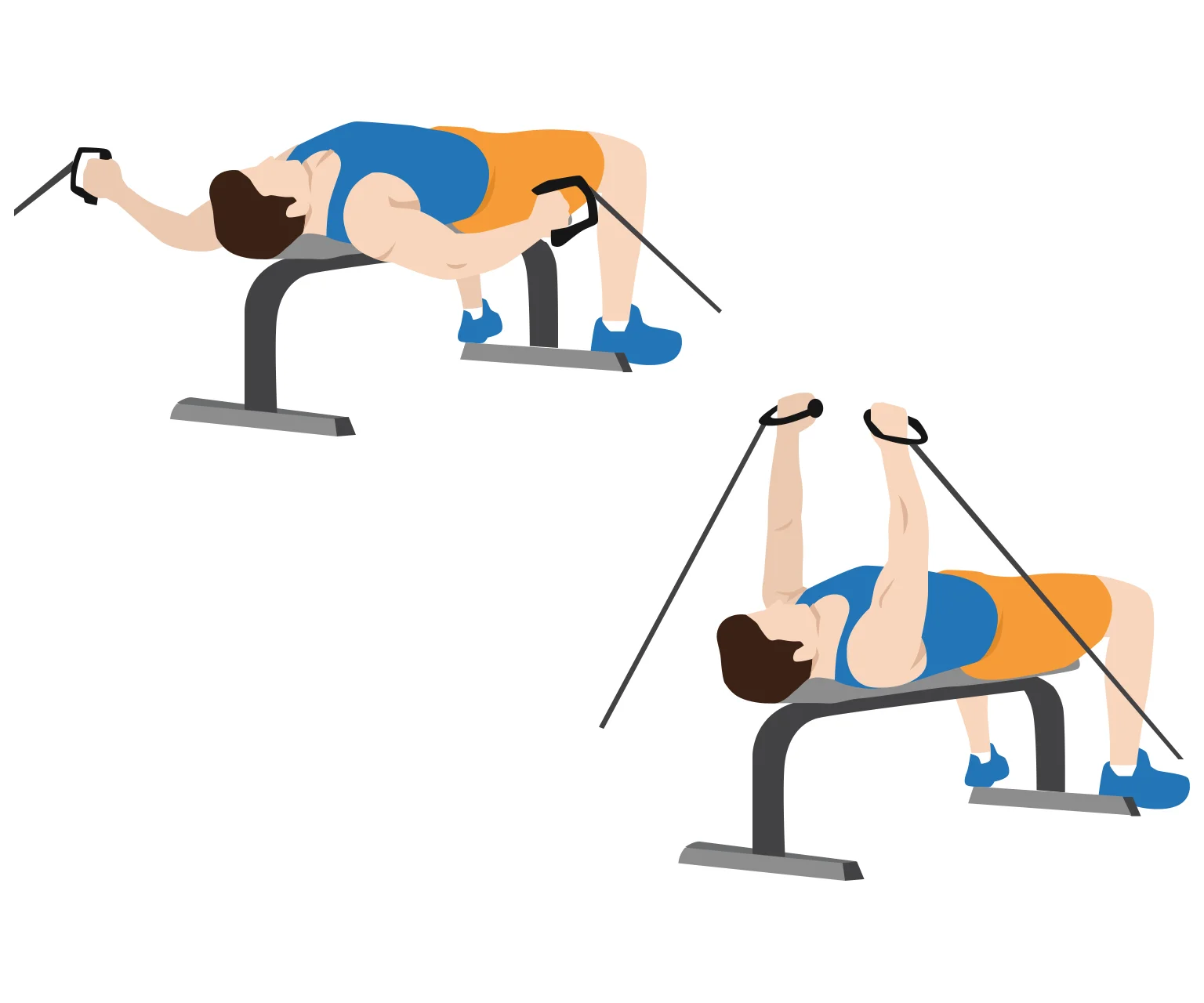
With the right setup, you can also use cables whilst lying on a flat bench. The movement is similar to the flat bench dumbbell chest fly, except the cable provides constant tension. This either makes the exercise easier to perform, or allows you to work with a greater resistance than is possible with dumbbells.
How to do
- Adjust the pulleys to a low position.
- Lie on the bench and grab the handles with both hands. You should have an overhand grip.
- Pull up the cables up directly above your chest.
- With a slight bend in your elbows, lower your arms out to both sides in a wide arcing motion. You should feel the stretch in your chest.
- Squeeze at the peak of the movement.
- Finally, raise your arms back up to the starting position.
- Repeat for the desired number of reps.
Resistance band chest crossovers
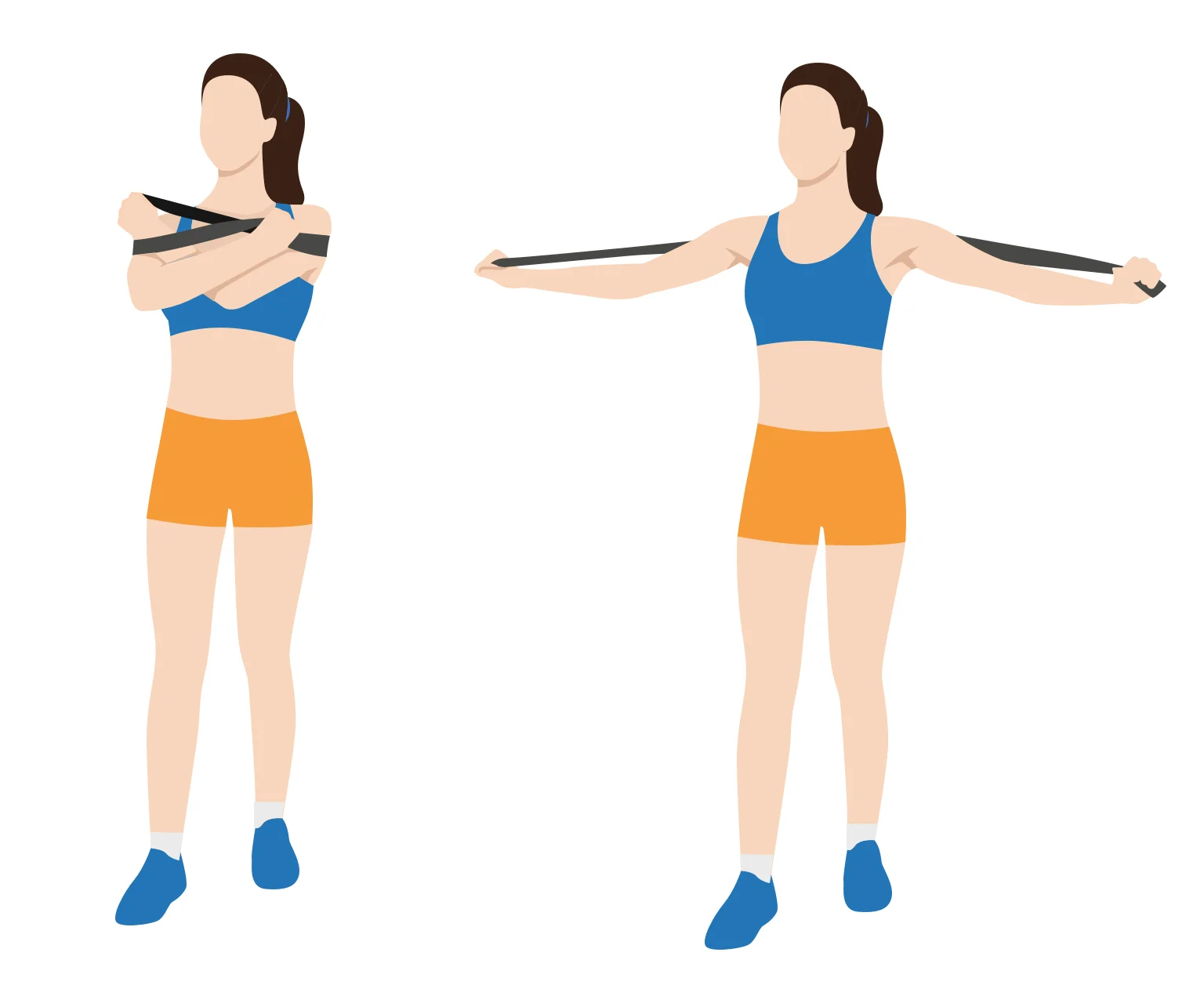
This variation of the chest fly uses a resistance band wrapped around your shoulders. Resistance bands provide a variable resistance, meaning the tension increases as you pull your arms across your chest. This can make the exercise more challenging for beginners, but it is limited in terms of progression. Once you've mastered this exercise, you should consider using the dumbbell fly or cable crossover instead.
How to do
- Stand tall with your feet shoulder-width apart.
- Grip a resistance band and pull it behind your shoulders until there is some tension in the band.
- With a bend in your elbows, pull your hands together across your chest. Continue until each hand touches the opposite shoulder.
- Squeeze for a moment at the peak of the movement.
- Finally, slowly return your backs back out to the starting position.
- Repeat for the desired number of reps.
Stability ball chest flys
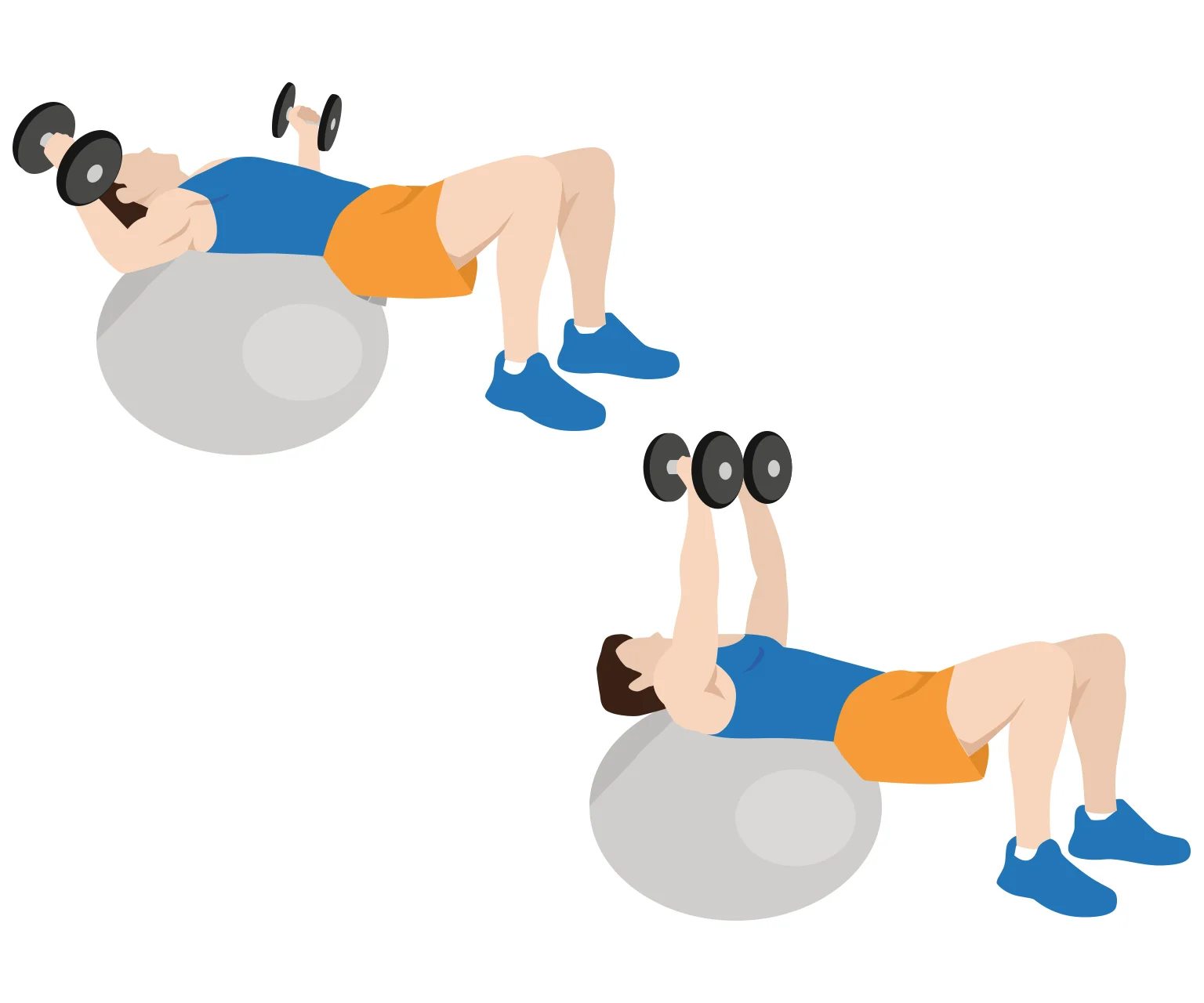
The use of a stability ball introduces additional challenge since it demands your balancing skill and core strength. This variation engages more muscles than typical chest flys, but it is a useful exercise of you are looking to build more core strength.
How to do
- Start by sitting on a stability ball with a dumbbell in each hand.
- Walk your feet forward and roll your back down until your upper back, head and neck are supported by the stability ball. Your knees should be bent at a 90 degree angle.
- Hold the dumbbells directly above your chest with your palms facing each other.
- Slowly lower the dumbbells out to your sides in a wide arcing motion. Lower until your elbows are level with your chest.
- Finally, raise the weights back up to the starting position.
- Repeat for the desired number of reps.
Tips
Slow it down
It may be tempting to perform the chest flys as quickly as you can, particularly if you are using a lighter weight.
However, it's recommended to slow down your movements. Slow, controlled movements increase the time under tension for your chest muscles. This ensures maximum engagement, which increases the intensity and effectiveness of the exercise.
Using slow, controlled movements also reduces the risk of injury that could result from dropping the weights too quickly or lifting them up using momentum.
Proper form
Here are some tips to help you maintain the proper form during chest flys:
- Maintain a slight bend in your elbows - Keeping a slight bend in your elbows can prevent strain and injury. It also ensures that your chest is doing the work, rather than your arms. Straightening your arms too much could shift the focus from your chest to your arms, reducing the effectiveness of the exercise.
- Keep your back flat against the bench - Keeping your back flat prevents you from using momentum to lift the weights, which could lead to injury. It also ensures you are isolating the chest muscles.
